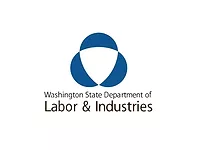Dangerous Fall Shows Need for More Fall Safety in Roofing

Image courtesy of OSHA.
In a horrifying video released last week, a 14-year-old working on a roof with Double M Roofing & Construction is seen slipping. The surveillance video, filmed on Dec. 17, 2020, pauses before showing the worker falling 20 feet to the ground.
It’s just one of the many fall-related roofing incidents that the Occupational Safety and Health Administration (OSHA) has recently reported on, bringing to mind the prediction made by Cotney Attorneys & Consultants CEO Trent Coney in his 2021 State of the Industry analysis.
“Overall, the construction industry should prepare for more stringent oversight from OSHA, including more inspections and citations,” he said.
In a presentation held during the International Roofing Expo’s Virtual Edition, Frank Marino, a partner at Safety Check Inc., noted that three of the top 10 most frequently cited standards in 2020 for roofing contractors included fall protection. The top cited standard was “duty to have fall protection,” which he believes OSHA is determining through interviews and investigations.
“One of the reasons for that, I believe, is that OSHA is no longer, or has not, just accepted a fall protection sign-in sheet, or training sign-in sheet, that these employees have been properly trained,” said Marino. “They’re determining some of these individuals have not been properly trained, whether they have it documented or not.”
Roofing contractors should pay heed to this recent rash of incident reports and take the proper precautions so they don’t end up making headlines like these:
OSHA Cites Ohio Roofing Contractor After 14-Year-Old Suffers Critical Injuries in Fall
According to a release from OSHA, the 14-year-old boy was working on the roof of a Berea, Ohio townhome without required fall protection and suffered critical injuries when he fell 20-feet to the ground.
Immediately following this incident, the company’s owner and three other workers put on personal fall arrest equipment to complete the roofing work in an apparent attempt to conceal the fact that fall protection was not in use at the time of the injury.
Sixteen days later, OSHA inspectors observed the owner and four Double M employees installing roofing materials on a residential roof more than 22 feet off the ground in Hinckley, again without using necessary fall protection equipment. Following inspections of both job sites, OSHA has proposed penalties of $73,533 to the West Farmington contractor.
Oregon OSHA Cites Builder for Death of Roofing Contractor
Back in August 2020, a 38-year-old roofer fell to their death while working on a construction site for a high school in Bend, Ore.
The Bulletin recently reported that the worker, James Andrew Bickers, fell 45 feet from the roof after having an accident with a 1,100-pound cart slipping out of control near the roof edge. According to the Bulletin, general contractor Kirby Nagelhout Construction Co. was cited for the safety violation and fined $2,450, while River Roofing received a $3,600 fine. Both companies have since filed notices of appeal with the Oregon OSHA.
More recently, Oregon OSHA is citing Ridgeline Roofing & Construction Owner Matthew Bese for four job safety violations, including willfully exposing workers to fall hazards. Bese was issued $9,035 in penalties.
In September 2020, inspectors observed Bese doing roofing work on a house in Tigard, Ore. alongside several employees, in plain view, with no fall protection and exposed to a fall of at least 9 feet. According to OHSA, Bese said he doesn’t require employees to work with fall protection for roofing jobs with low pitches.
Prior to this, Oregon OSHA cited Mid Oregon Builders LLC in November 2020 for not providing fall protection, exposing workers to a 20-foot fall while completing roofing work. The citation carries a penalty of $42,000. Mid Oregon Builders previously incurred a $36,000 penalty in September for repeated failure to heed the 6-foot trigger height requirement for fall protection.
“There is absolutely no good reason to ignore fall protection requirements that have, time and again, been proven to protect workers,” said Michael Wood, administrator for Oregon OSHA. “To make excuses is an abdication of responsibility that only courts disaster.”
OSHA Investigating New Jersey Roofer's Fall
According to the Asbury Park Press, OSHA is investigating a fall that happened on March 8 in Marlboro, N.J. Police received a 911 call around 11:30 a.m. about a 24-year-old roofer falling through the roof and landing inside a building. Reports indicate he fell around 20 feet, sustaining injuries to his head, back and leg and possibly internal injuries.
The Asbury Park Press reports the roofer works for Hageman Roofing Co. in Ridgefield Park. OSHA's establishment inspection database shows the roofing contractor received an initial penalty of $9,603 in 2016 related to a "duty to have fall protection" charge. In 2017, it received two penalties of $1,793, one for respiratory protection and the other related to obtaining a permit for confined spaces.
OSHA Cites Ohio Roofing Contractor for Exposing Workers to Three-Story Fall Hazards
For the sixth time since 2012, OSHA found Ivan Lowky, operator of ILS Construction, failed to provide workers with fall protection equipment. OSHA cited ILS Construction for two willful and one serious violation, and proposed $117,572 in penalties.
According to OSHA, five workers could be seen moving unsteadily atop a Canton, Ohio apartment building three stories above ground on Nov. 3, 2020, all of them at risk of a serious or fatal fall.
On Dec. 16, 2020 — the day prior to the Double M Roofing incident — the Bureau of Labor Statistics released data regarding fatal workplace injuries, which reported that 93 of the 111 roofing fatalities in 2019 were caused by a fall, slip or trip incident. It’s a grim reminder of the dangers involved in roofing.
It highlights the importance of taking part in OSHA’s eighth annual National Stand-Down to Prevent Falls in Construction, scheduled for May 3-7, 2021.
“Workers suffer serious and fatal injuries from falls and have a devastating impact on families and businesses,” said Principal Deputy Assistant Secretary of Labor for Occupational Safety and Health James Frederick. “This important collaboration with the construction industry encourages employers to learn how to better control fall-related hazards and improve their safety and health programs.”
Looking for a reprint of this article?
From high-res PDFs to custom plaques, order your copy today!







